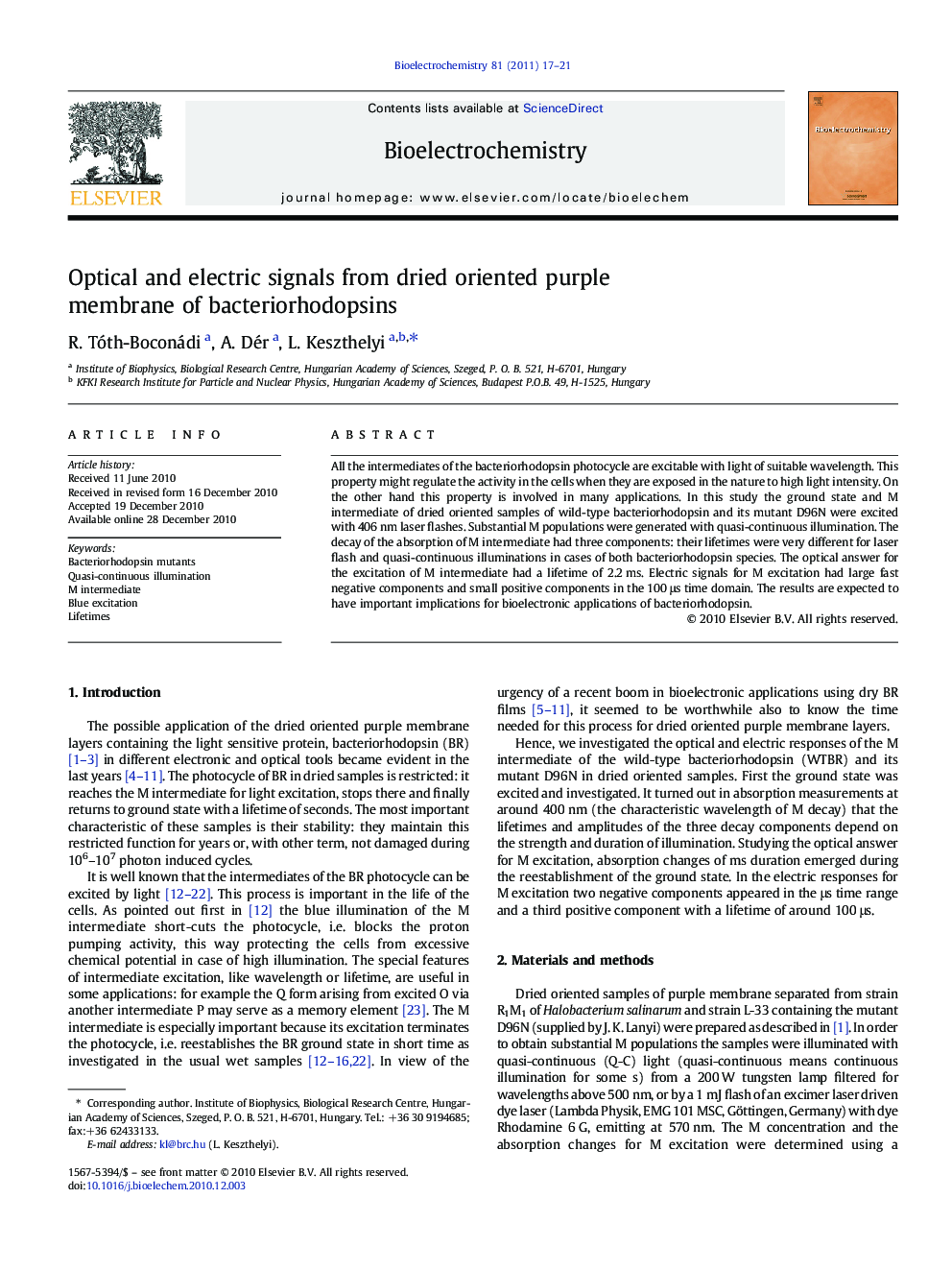| Article ID | Journal | Published Year | Pages | File Type |
|---|---|---|---|---|
| 1268463 | Bioelectrochemistry | 2011 | 5 Pages |
All the intermediates of the bacteriorhodopsin photocycle are excitable with light of suitable wavelength. This property might regulate the activity in the cells when they are exposed in the nature to high light intensity. On the other hand this property is involved in many applications. In this study the ground state and M intermediate of dried oriented samples of wild-type bacteriorhodopsin and its mutant D96N were excited with 406 nm laser flashes. Substantial M populations were generated with quasi-continuous illumination. The decay of the absorption of M intermediate had three components: their lifetimes were very different for laser flash and quasi-continuous illuminations in cases of both bacteriorhodopsin species. The optical answer for the excitation of M intermediate had a lifetime of 2.2 ms. Electric signals for M excitation had large fast negative components and small positive components in the 100 μs time domain. The results are expected to have important implications for bioelectronic applications of bacteriorhodopsin.
Research Highlights► Double-flash-induced absorption and electric signals of bacteriorhodopsin. ► Rate-limiting steps of the photoreaction cycle. ► Implications for Bioelectronic applications.
